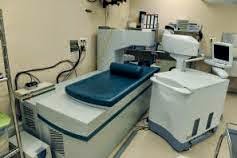Consumers, product manufacturers, and healthcare providers in the U.S. can now track information about medical devices right from manufacturing through distribution to patient use. The U.S. Food and Drug Administration (FDA) has unveiled the Global Unique Device Identification Database, called AccessGUDID, after three years since Congress mandated the marking and tracking of medical devices with unique identifiers.
The database takes the help of unique device identification (UDI) system to identify the medical devices sold in the U.S. Once fully implemented, most medical devices would be labeled with a human- and machine-readable UDI. For the public to retrieve information about the devices, the device labelers would be asked to submit relevant information about each device to AccessGUDID. According to the FDA, the UDIs will be started with the medical devices involving highest risk, such as pacemakers and heart valves and would be spanned over several years. Most of the device companies will need to put the UDI on their label and packaging whereas some will be asked to put the UDI on the product itself.
The identification system was made under the Food and Drug Administration Safety and Innovation Act in 2012. A year later, the FDA announced the schedule for phased implementation of the medical devices. The final rule on this matter issued by the regulatory authority allows the healthcare providers, the industry as well as the FDA to access important reports about the adverse events related to any medical device, point out the defective medical device and take focuses, appropriate, and corrective actions. Under the rule, the medical device labels also need to display dates in a standard format to avoid ambiguity and help provide correct information to the device users. The FDA has mentioned that the UDI implementation will facilitate innovation in the medical devices market and will improve patient safety.

No comments:
Post a Comment